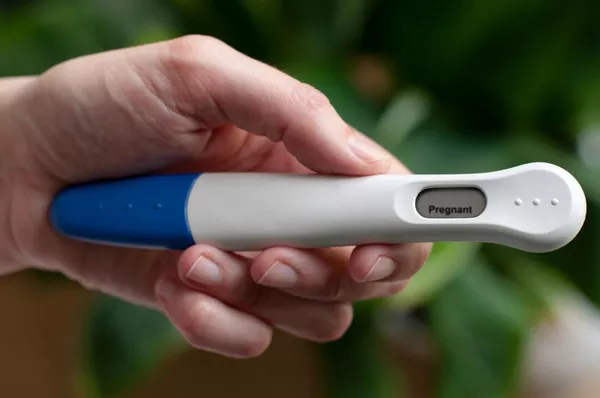Fertility is a topic of great importance for individuals and couples who are planning to conceive or avoid pregnancy. Understanding the menstrual cycle and identifying fertile days are crucial steps in achieving reproductive goals. In this comprehensive guide, we delve into the intricacies of the menstrual cycle, ovulation, and fertility, exploring how many days in a cycle are considered fertile and the factors that influence fertility.
The Menstrual Cycle: An Overview:
The menstrual cycle is the monthly hormonal cycle that prepares a woman’s body for potential pregnancy. It is controlled by a complex interplay of hormones, including estrogen, progesterone, follicle-stimulating hormone (FSH), and luteinizing hormone (LH). The menstrual cycle consists of several phases, each with distinct hormonal changes and physiological events:
Menstrual Phase: The menstrual phase marks the beginning of the menstrual cycle and is characterized by the shedding of the uterine lining (endometrium). Menstrual bleeding typically lasts for 3 to 7 days, although the duration may vary among individuals.
Follicular Phase: Following menstruation, the follicular phase begins. During this phase, FSH stimulates the growth and maturation of ovarian follicles, each of which contains an immature egg (oocyte). Estrogen levels rise gradually, preparing the uterine lining for potential implantation of a fertilized egg.
Ovulation: Ovulation is the process by which a mature egg is released from the ovary and travels down the fallopian tube, where it may be fertilized by sperm. Ovulation usually occurs around the midpoint of the menstrual cycle, approximately 14 days before the start of the next menstrual period. LH surge triggers the release of the egg from the dominant follicle.
Luteal Phase: Following ovulation, the ruptured follicle transforms into a temporary endocrine structure called the corpus luteum, which produces progesterone. Progesterone helps prepare the uterine lining for embryo implantation and supports early pregnancy if fertilization occurs. The luteal phase typically lasts for 10 to 16 days and ends with the onset of menstruation if pregnancy does not occur.
Determining Fertility Window:
The fertile window refers to the days in a woman’s menstrual cycle when she is most likely to conceive if she engages in unprotected intercourse. Understanding the fertile window is essential for couples trying to conceive and for individuals seeking to avoid pregnancy by practicing fertility awareness methods or natural family planning.
The fertile window typically encompasses the days leading up to and including ovulation, as sperm can survive in the female reproductive tract for several days, awaiting the release of the egg. The egg itself is viable for fertilization for approximately 12 to 24 hours after ovulation, making timing intercourse crucial for conception.
Factors Affecting Fertility:
Several factors influence fertility and the length of the fertile window, including:
Menstrual Cycle Regularity: Regular menstrual cycles, typically lasting between 21 and 35 days, are associated with more predictable ovulation patterns and a consistent fertile window. Irregular cycles, on the other hand, may make it more challenging to pinpoint ovulation and determine fertile days accurately.
Ovulation Timing: Ovulation timing varies among individuals and may be influenced by factors such as stress, illness, medications, and underlying medical conditions. Tracking menstrual cycles and monitoring ovulation signs, such as changes in cervical mucus consistency and basal body temperature, can help identify fertile days more accurately.
Sperm Viability: Sperm can survive in the female reproductive tract for up to 5 days under optimal conditions. Therefore, intercourse occurring in the days leading up to ovulation can still result in conception, as sperm may be present and viable when the egg is released.
Egg Viability: The lifespan of the egg after ovulation is relatively short, ranging from 12 to 24 hours. Therefore, timing intercourse closer to ovulation maximizes the chances of sperm encountering a viable egg for fertilization.
Cervical Mucus Changes: The consistency and quality of cervical mucus change throughout the menstrual cycle in response to hormonal fluctuations. During the fertile window, cervical mucus becomes clear, slippery, and stretchy, resembling raw egg whites. This fertile cervical mucus facilitates sperm transport and survival in the reproductive tract, enhancing fertility.
Methods for Tracking Fertility:
Several methods can help individuals track their fertile days and identify ovulation:
Calendar-Based Methods: Calendar-based methods involve tracking menstrual cycles over several months to predict ovulation and the fertile window. This approach relies on the assumption that ovulation occurs around the same time in each menstrual cycle, typically midway through the cycle.
Ovulation Predictor Kits (OPKs): OPKs detect the surge in LH that precedes ovulation, helping predict when ovulation is likely to occur. By testing urine samples daily, individuals can identify the LH surge and time intercourse accordingly to maximize the chances of conception.
Basal Body Temperature (BBT) Charting: BBT charting involves taking daily temperature measurements upon waking and recording them on a chart. A slight rise in basal body temperature indicates that ovulation has occurred, helping confirm the fertile window retrospectively.
Cervical Mucus Monitoring: Observing changes in cervical mucus consistency and texture throughout the menstrual cycle can provide valuable insights into fertility status. Fertile cervical mucus, which resembles raw egg whites, indicates the approach of ovulation and the fertile window.
See Also: Pregnancy Cycle
Conclusion:
Understanding fertility and the menstrual cycle is essential for individuals and couples navigating family planning decisions. By identifying the fertile window and timing intercourse accordingly, individuals can optimize their chances of conceiving or avoiding pregnancy effectively. While the fertile window typically encompasses the days leading up to and including ovulation, factors such as menstrual cycle regularity, ovulation timing, sperm viability, egg viability, and cervical mucus changes can influence fertility and the length of the fertile window. Utilizing various fertility tracking methods, such as calendar-based methods, ovulation predictor kits, basal body temperature charting, and cervical mucus monitoring, can help individuals accurately determine their fertile days and achieve their reproductive goals.


